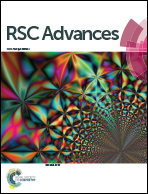H/He interaction with vacancy-type defects in α-Al2O3 single crystals studied by positron annihilation
Abstract
To probe the interaction of H and He, produced by tritium decay, with vacancy-type defects of α-Al2O3 as a tritium permeation barrier (TPB) in fusion reactors, α-Al2O3 single crystals were treated in pure Ar gas, D2 gas and T2 gas with subsequent tritium aging, respectively, and then their positron annihilation lifetimes and the type of defects that may contribute to the observed positron lifetime components were studied, in combination with DFT results. More monovacancies and vacancy clusters were formed in the thermally hydrogenated samples when compared to the fresh and Ar-annealed samples, indicating the stabilizing effect of hydrogen; this was consistent with the Fermi level position of α-Al2O3 moving towards the conduction band minimum (CBM) in the presence of hydrogen impurities, resulting in VAl3− and [VAl3−–H+]2− becoming more stable, as observed by DFT calculations. The monovacancies were slightly eliminated when the samples were thermally annealed and then aged in T2 gas at room temperature, indicating that He filled the vacancies. This was consistent with it being favourable for He atoms to occupy Al vacancies, with HeAl3− forming most readily, whilst more vacancy clusters were continuously induced, suggesting that Al–O bonds weakened and thus nano-hardness decreased with an external load. This study provides the first evidence that Al vacancies can be stabilized by H and filled with He, which will provide further novel TPB design opportunities.


 Please wait while we load your content...
Please wait while we load your content...